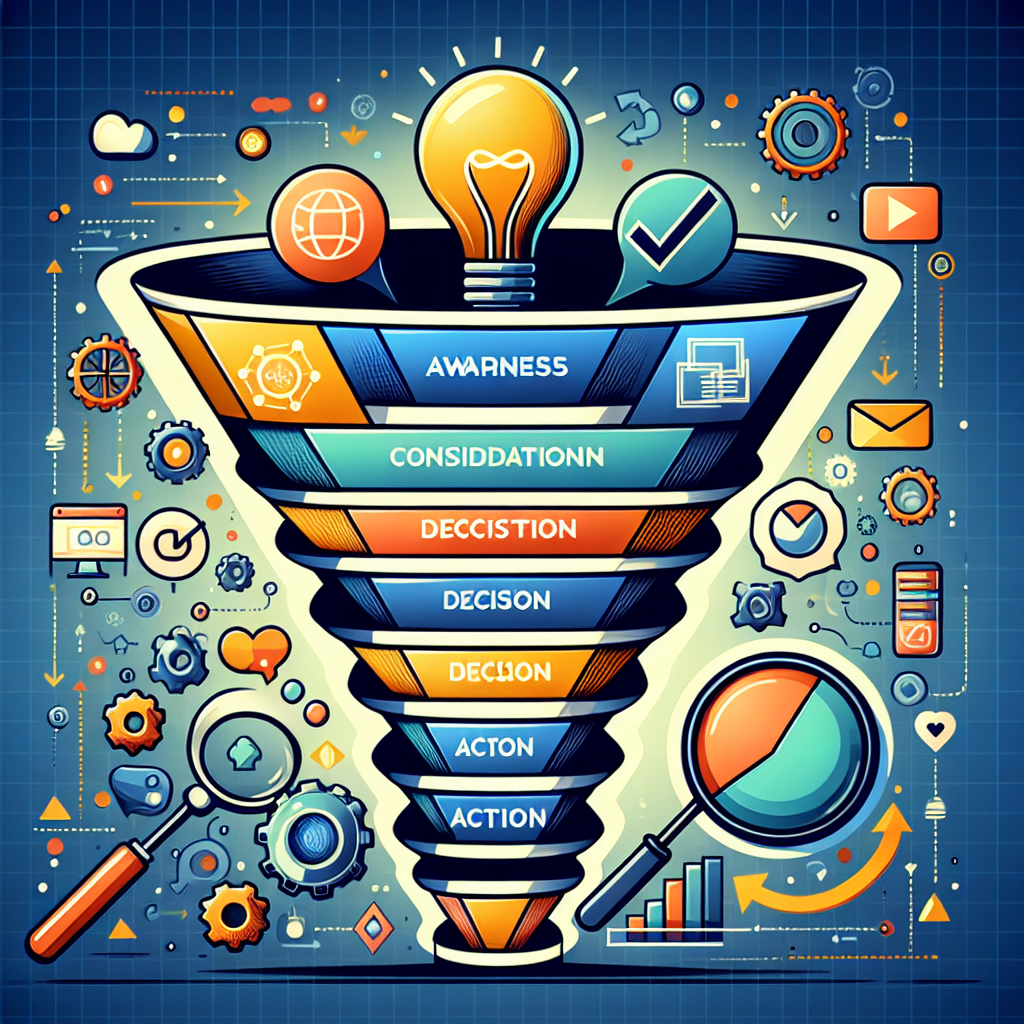In the increasingly competitive landscape of digital marketing, capturing and converting potential customers is more critical than ever. Constructing an effective digital marketing funnel allows businesses to streamline this process, guiding prospects from awareness to action. This article outlines key strategies for building a successful digital marketing funnel that not only attracts leads but also nurtures them through to conversion.
Understanding the Digital Marketing Funnel
Before diving into strategies, it’s essential to understand the structure of a digital marketing funnel, which typically comprises four main stages:
- Awareness: At this stage, potential customers become aware of your brand, products, or services.
- Interest: Users show interest in your offerings and seek more information and engagement.
- Desire: Prospects develop a preference for your brand as they consider your solutions.
- Action: This is the final stage where leads convert into customers through a purchase or sign-up.
Strategies for Building an Effective Digital Marketing Funnel
1. Define Your Target Audience
Understanding who your ideal customer is forms the backbone of a successful funnel. Create buyer personas that encompass demographics, interests, pain points, and online behaviors. This knowledge will guide your content creation and marketing tactics, allowing for tailored messaging that resonates with your audience.
2. Create High-Quality Content
Quality content is crucial at each stage of the funnel. For the awareness stage, focus on informative and engaging blog posts, videos, or infographics that address your audience’s pain points. As users progress to the interest stage, provide more in-depth content such as whitepapers, case studies, or webinars that build trust and establish authority in your niche.
3. Utilize SEO and Paid Advertising
To attract leads into the top of the funnel, invest in Search Engine Optimization (SEO) and paid advertising. Use relevant keywords to optimize your website and content for search engines, ensuring that your brand ranks well for queries that your target audience is likely to search. Complement this with targeted ads on social media platforms and search engines to enhance visibility and capture potential leads where they spend their time.
4. Leverage Social Media Engagement
Social media serves as a powerful tool for engaging your audience and driving traffic to your funnel. Use platforms like Facebook, Instagram, LinkedIn, and Twitter to share valuable content, interact with users, and foster a community around your brand. Influencer partnerships can also amplify your reach and credibility, helping to draw more awareness to your offerings.
5. Implement Lead Magnets
To facilitate the transition from awareness to interest, implement lead magnets. These are valuable resources offered in exchange for contact information, such as eBooks, free trials, or discount codes. Lead magnets not only help capture leads but also set the stage for future engagement through nurturing campaigns.
6. Nurture Leads with Email Marketing
Once you have captured leads, nurturing them through email marketing is essential. Segment your email list based on audience behaviors and preferences to personalize your outreach. Send targeted emails that provide additional value, such as blog updates, product information, and special promotions, encouraging leads to move down the funnel.
7. Optimize Landing Pages
Your landing pages play a critical role in converting interest into desire and action. Ensure that each landing page is optimized for conversion with clear calls-to-action (CTAs), engaging visuals, and concise messaging that aligns with visitor intent. A/B testing different elements on landing pages can help refine your approach and increase conversion rates.
8. Implement Retargeting Strategies
Not every lead will convert on their first visit. Retargeting ads can re-engage users who have interacted with your site but haven’t completed a desired action. By displaying tailored ads to these users on social media and other platforms, you can keep your brand top-of-mind and drive them back to the funnel.
9. Analyze and Adjust Strategies
The digital landscape is ever-evolving, making it crucial to continuously analyze your funnel. Use analytics tools to track key performance indicators (KPIs) such as traffic, conversion rates, and customer acquisition costs. Regularly assess your strategies and adjust based on data-driven insights to optimize results.
10. Focus on Post-Purchase Engagement
The funnel doesn’t end with a purchase; nurturing customer relationships post-purchase is vital for fostering loyalty and encouraging repeat business. Send follow-up emails thanking customers, requesting feedback, and offering additional resources or upsell opportunities.
Conclusion
Building an effective digital marketing funnel requires a blend of strategic planning, audience understanding, and continuous optimization. By employing these strategies, businesses can create a streamlined process that not only generates leads but converts them into loyal customers. With the right approach, your digital marketing funnel can become a powerful engine for growth in your business.














Leave feedback about this
You must be logged in to post a comment.